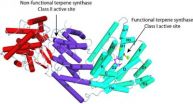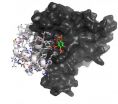"Wastewater reuse is poised to become a legitimate part of the nation's water supply portfolio given recent improvements to treatment processes," said R. Rhodes Trussell, chair of the committee that wrote the report and president of Trussell Technologies, Pasadena, Calif. "Although reuse is not a panacea, wastewater discharged to the environment is of such quantity that it could measurably complement water from other sources and management strategies."
The report examines a wide range of reuse applications, including potable water, non-potable urban and industrial uses, irrigation, groundwater recharge, and ecological enhancement. The committee found that many communities have already implemented water reuse projects -- such as irrigating golf courses and parks or providing industrial cooling water in locations near wastewater reclamation plants -- that are well-established and generally accepted. Potable water reuse projects account for only a small fraction of the volume of water currently being reused. However, many drinking water treatment plants draw water from a source that contains wastewater discharged by a community located upstream; this practice is not officially acknowledged as potable reuse.
The report outlines wastewater treatment technologies for mitigating chemical and microbial contaminants, including both engineered and natural treatment systems. These processes can be used to tailor wastewater reclamation plants to meet the quality requirements of intended reuse applications. The concentrations of chemicals and microbial contaminants in reuse projects designed to augment drinking water supplies can be comparable to or lower than those commonly present in many drinking water supplies. The committee emphasized the need for process reliability and careful monitoring to ensure that all reclaimed water meets the appropriate quality objectives for its use.
Costs of water reuse for potable and non-potable applications vary widely because they depend on site-specific factors, the committee said. Water reuse projects tend to be more expensive than most water conservation options and less expensive than seawater desalination and other new supply alternatives. Although the costs of reclaimed water are often higher than current water sources, the report urges water authorities to consider other costs and benefits in addition to monetary expenditures when assessing reuse projects. For example, water reuse systems used in conjunction with a water conservation program could be effective in reducing seasonal peak demands on the drinking water system. Depending on the specific designs and pumping requirements, reuse projects could also have a larger or smaller carbon footprint than existing supply alternatives or reduce water flows to downstream users and ecosystems.
Water reuse regulations differ by state and are not based on risk-assessment methods, the report says. Adjustments to the federal regulatory framework could help ensure a high level of public health protection, provide a consistent minimum level of protection across the nation, and increase public confidence in potable and non-potable water reuse. The report notes that existing legislative tools could be applied to improve the quality of water for reuse, including updating the National Pretreatment Program's list of priority pollutants to include a wider inventory of known toxic substances. Also, it lists 14 areas of research to help guide the country on how to apply water reuse appropriately. Such research would require improved coordination among federal and nongovernmental organizations.
###
The study was sponsored by the U.S. Environmental Protection Agency, U.S. Bureau of Reclamation, National Science Foundation, National Water Research Institute, Centers for Disease Control and Prevention, Water Research Foundation, Orange County Water District, Orange County Sanitation District, Los Angeles Department of Water and Power, Irvine Ranch Water District, West Basin Water District, Inland Empire Utilities Agency, Metropolitan Water District of Southern California, Los Angeles County Sanitation Districts, and Monterey Regional Water Pollution Control Agency.
The National Academy of Sciences, National Academy of Engineering, Institute of Medicine, and National Research Council make up the National Academies. They are independent, nonprofit institutions that provide science, technology, and health policy advice under an 1863 congressional charter. Panel members, who serve pro bono as volunteers, are chosen by the Academies for each study based on their expertise and experience and must satisfy the Academies' conflict-of-interest standards. The resulting consensus reports undergo external peer review before completion. For more information, visit http://national-academies.org/studycommitteprocess.pdf. A panel roster follows.
Contacts:
Jennifer Walsh, Media Relations Officer
Luwam Yeibio, Media Relations Assistant
Office of News and Public Information
202-334-2138; e-mail news@nas.edu
Pre-publication copies of Water Reuse: Potential for Expanding the Nation's Water Supply Through Reuse of Municipal Wastewater are available from the National Academies Press; tel. 202-334-3313 or 1-800-624-6242 or on the Internet at http://www.nap.edu. Reporters may obtain a copy from the Office of News and Public Information (contacts listed above).
NATIONAL RESEARCH COUNCIL
Division on Earth and Life Studies
Water Science and Technology Board
Committee to Assess Water Reuse as an Approach for Meeting Future Water Supply Needs
R. Rhodes Trussell* (chair)
President
Trussell Technologies Inc.
Pasadena, Calif.
Henry A. Anderson
Chief Medical Officer for Occupational and Environmental Health
Wisconsin Division of Public Health
Madison
Edmund Archuleta
President and CEO
El Paso Water Utilities Public Service Board
El Paso, Texas
James Crook
Professional Engineer and Independent Consultant
Monterey Regional Water Pollution Control Agency
Monterey, Calif.
Jorg E. Drewes
Professor of Civil and Environmental Engineering
Colorado School of Mines
Golden
Denise D. Fort
Professor
School of Law
University of New Mexico
Albuquerque
Charles N. Haas
Betz Professor of Environmental Engineering
Department of Civil, Architectural, and Environmental Engineering
Drexel University
Philadelphia
Brent Haddad
Professor of Environmental Studies, and
Founder and Director
Center for Integrated Water Research
University of California
Santa Cruz
Duane Huggett
Assistant Professor
Department of Biology
Institute of Applied Sciences
University of North Texas
Denton
Sunny Jiang
Associate Professor of Environmental Engineering, Environmental Health, and Environmental Toxicology
University of California
Irvine
David L. Sedlak
Professor of Civil and Environmental Engineering
University of California
Berkeley
Shane Snyder
Professor
College of Engineering
University of Arizona
Tucson
Margaret H. Whittaker
Chief Toxicologist
ToxServices
Washington, D.C.
Dale Whittington
Professor
Departments of Environmental Sciences and Engineering and City and Regional Planning
University of North Carolina
Chapel Hill
RESEARCH COUNCIL STAFF
Stephanie Johnson
Study Director
* Member, National Academy of Engineering
END



